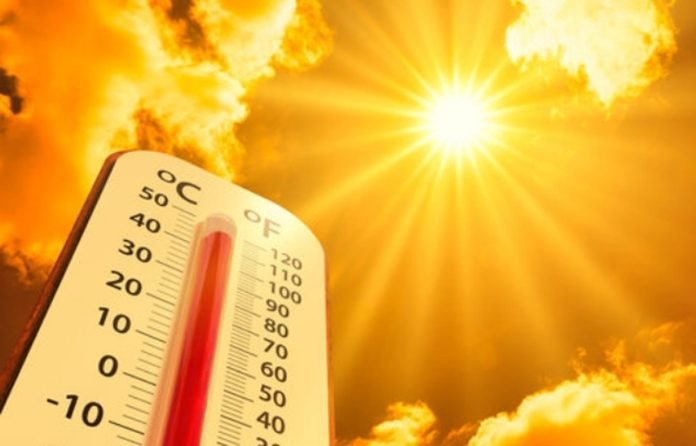As an unrelenting heatwave continues to sweep across the plains of the Jammu region, the temperature in the Temple City soared to a season-high of 44.7 degrees Celsius today. Samba emerged as the hottest spot, recording a blistering 46.8°C, according to the Indian Meteorological Department (IMD) Srinagar. The searing heat, coupled with frequent unscheduled power cuts and delayed fault rectification, has left residents reeling.
The MeT Department has predicted continued dry and hot weather until June 14, with potential relief from the heatwave expected from the evening of June 14 or early June 15. The monsoon, which was initially expected by mid-June, is now forecast to arrive in the last week of June or early July, with pre-monsoon showers likely in the third week of June.
Rising Mercury Across the Region
Temperatures across the Jammu region remained significantly above normal:
- Jammu: 44.7°C (5.9°C above normal)
- Samba: 46.8°C
- Kathua: 43.8°C
- Reasi: 42.2°C
- Ramban: 41.9°C
- Rajouri: 40.2°C
- Poonch: 39.5°C
- Katra: 40.6°C (5°C above normal)
- Kishtwar: 33.8°C
In the Kashmir Valley, temperatures were also unusually high:
- Qazigund: 34.6°C (8°C above normal)
- Srinagar: 33.9°C (6°C above normal)
- Kupwara: 32.8°C
- Kokernag: 32.9°C
- Pahalgam: 28.8°C
- Gulmarg: 24.0°C
The IMD also reported 46.5°C in Mirpur, PoJK, as the second-highest temperature in the region.
Power Infrastructure Overwhelmed
The soaring temperatures have overwhelmed power infrastructure in districts such as Jammu, Samba, Kathua, Udhampur, and Reasi. Overloaded transformers and damaged power cables have led to widespread outages, often lasting over 12 hours.
Residents in Jammu North, including Indira Colony, Lakad Mandi, Excelsior Lane, Bhawani Nagar, and Naseeb Nagar, suffered a prolonged power outage starting Tuesday night, with restoration taking place only by 11:20 AM on Wednesday. Similar reports have poured in from various parts of Udhampur, Samba, and Kathua.
Despite repeated calls, locals allege that PDD officials failed to respond, with many officials either switching off phones or ignoring calls during the crisis. Business establishments have also taken a hit, and even areas with smart meters—who were promised uninterrupted power—have been subjected to long cuts, leaving consumers angry and helpless.
PDD Cites Overload, Staff Shortage Amid Strike
Speaking to the media, Chief Engineer PDD/JPDCL Jammu, KK Thapa, said the power crisis has worsened due to overloading caused by extreme temperatures. He added that many electric transformers have been damaged, and the situation has been compounded by the ongoing strike by daily wage workers, which began on Tuesday.
“Our permanent staff is limited, and with daily wagers on strike, restoration work has been delayed,” Thapa said. He assured that the issue of striking workers and staff shortages has been taken up with higher authorities, including the Managing Director of JPDCL, and would be resolved soon.
Water Supply Also Affected
The frequent power cuts have also disrupted water supply across the region. Without adequate electricity, pumping stations have become non-functional, affecting water availability in several districts.
Residents are now demanding urgent intervention from the UT administration and the Power Department to address the dual crisis of intense heat and failing utilities.




